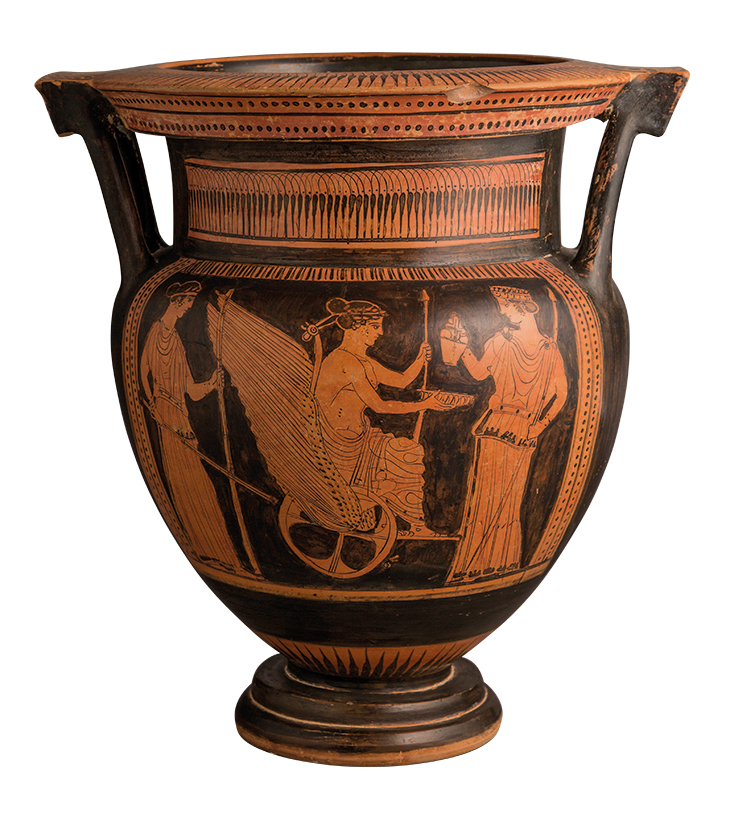This month, the city of Maastricht once again hosts the flagship fair of the European Fine Art Foundation (TEFAF) – still the continent’s pre-eminent marketplace for art and antiques. From 7–15 March, 280 dealers will convene at the Maastricht Exhibition & Conference Centre (MECC); they bring with them works of art spanning some seven millennia, many of which have not surfaced on the market for decades. Twenty-five newcomers enter the fray, six of them in the now 98-strong Antiques section, the remainder divided among Ancient Art, Design, Haute Joaillerie, Modern, Paintings, Paper, and Tribal. Once more, courtesy of the fair’s Showcase scheme, five recently established galleries dip their toes in the TEFAF water. Here is our second instalment of Susan Moore’s picks of the fair – catch up on part one here and part two here.
The Anglesey Tiara (c. 1890)
Hancocks, price on application
It is hard to imagine a tiara worn by a more flamboyant queen than this piece made for Henry Cyril Paget, 5th Marquess of Anglesey. The young aristocrat, dubbed ‘the dancing marquess’, squandered his vast inheritance on jewellery, furs, extravagant parties and theatrical performances, converting the chapel at his family’s country seat of Plas Newydd into the 150-seat Gaiety Theatre, where he was always the star turn. He also performed, covered in jewels, in Continental music halls; the young Gerald Tyrwhitt, later Lord Berners, saw a performance in Dresden: ‘There was a roll on the drums and the curtain went up on Lord Anglesey clad in a white silk tunic, a huge diamond tiara on his head, glittering with necklaces, brooches, bracelets and rings.’ This tiara’s graduated row of old European-cut and old mine-cut diamonds conveniently detaches to form a rivière necklace. The rather more demure 6th Marchioness was photographed wearing it by Cecil Beaton at George VI’s coronation in 1937.
The Anglesey Tiara (c. 1890). Hancocks, price on application

Lady Diana Spencer (1981), Bryan Organ
Christopher Kingzett Fine Art, £28,000
This is the most finished of four studies made for the painting commissioned by the National Portrait Gallery to mark the sitter’s engagement to HRH The Prince of Wales. Diana became the most photographed woman in the world and Organ’s portrait of her, informally dressed and set within the geometric grid of a golden doorway in the Yellow Drawing Room at Buckingham Palace, eerily prefigures the gilded cage she was to occupy. The inscribed drawing was a gift to the NPG’s director, John Hayes.
Lady Diana Spencer (1981), Bryan Organ. Christopher Kingzett Fine Art, £28,000

Bureau (c. 1925) Ture Ryberg
Jacksons, €150,000
The Swedish architect Ture Ryberg produced buildings, interiors and furniture for various national and international exhibitions, the furniture being produced by the Uppsala firm of J.E. Blomqvist. Similar to a bureau exhibited at the Paris Exposition of 1925 but with bolder geometries and darker woods, this piece is typical of the movement known as ‘Swedish Grace’ in its rational, simplified classicism and use of luxurious materials.
Bureau (c. 1925), Ture Ryberg. Jacksons, €150,000

Mandoline et portée de musique (1923) Pablo Picasso
Dickinson, price on application
Mandoline et portée de musique (1923), Pablo Picasso. Dickinson, price on application. © Succession Picasso/DACS, 2020

Madonna and Child (c. 1375), Lorenzo di Bicci
Salamon, €250,000
The first head of an important dynasty of Florentine artists, Lorenzo is known for his ability as a draughtsman and for the luminosity of his colours. This panel seems to belong to a small group of paintings intended for private devotion produced early on in his career, and characterised by richly ornamented textiles. More unusual is the expression of intimacy between mother and son, the gentle Madonna inclining her head to look down at the child cradled in her arms who, clutching at her cloak, turns to meet her gaze.
Madonna and Child (c. 1375), Lorenzo di Bicci. Salamon, €250,000

Attic red-figure column krater (c. 440–430BC), attributed to the Duomo Painter
Kallos Gallery, £175,000
Attic red-figure column krater (c. 440–430BC), attributed to the Duomo Painter

Ancient Greeks considered nature’s bounty the gift of the gods, believing that the goddess Demeter sent the demi-god Triptolemos to teach them the art of growing grain. The story of The Mission of Triptolemos is best known from representations on Athenian vases, and here we see him seated in his winged carriage as Demeter pours a libation, her daughter Persephone standing to the left. By bringing grain and its cultivation, he also brought civilisation, and from the mid sixth to mid fourth centuries BC this subject was used as propaganda, symbolising Athens civilising its territories. More than 30 vases have been attributed to the Duomo Painter.
From the March 2020 issue of Apollo. Preview and subscribe here.



